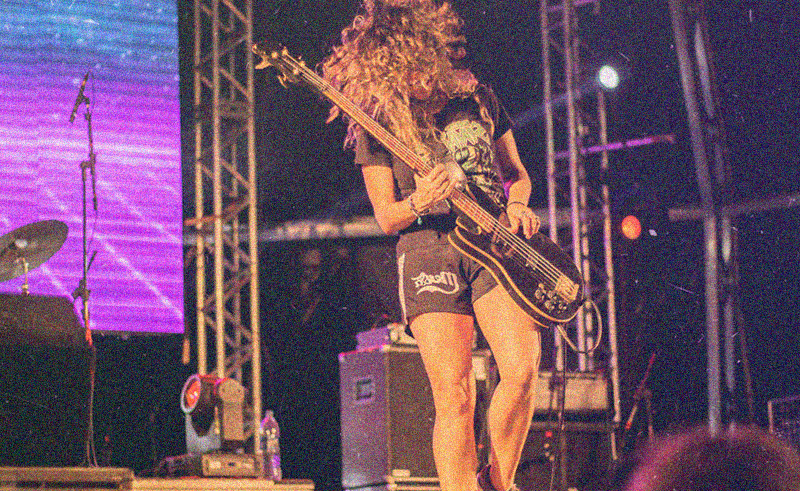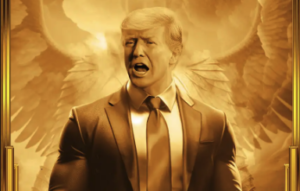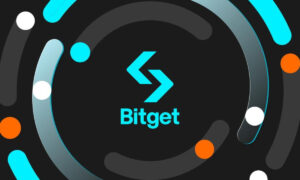Music NFTs From a Fan’s Perspective
5 min read
SceneNoise founder Timmy Mowafi contemplates the pitfalls and possibilities of music on the blockchain.
Originally published in XP Music Futures XINE 23
It seems every 20 years, like clockwork, a new format to consume music emerges. Vinyls gave way to cassettes, which were cast out for CDs before mp3 torrents were downloaded, only to be overshadowed by the tidal wave of streaming. Now for two years, there’s been a simmering murmur about the promise of NFTs in music. Most of that discussion has been around how blockchain based distribution – similar to how art-based NFTs blew up – has the potential to cut-out the middle men in the industry and provide more meaningful (and profitable) ways for artists to monetize from their fans. Till now, that utopian idea has not come into fruition, and much like the current state of Web3, from a mass adoption perspective, feels predominantly speculative. It is of course early days, and rather than imagine music NFTs as some sort of savior mechanism that will make artists’ dreams come true like a mythical A&R figure in a Hollywood biopic (if only the artist can figure out how to buy crypto and download a wallet and mint their music in act two), I’d like to shift our gaze to the fans perspective and wonder how NFTs could have the potential to orchestrate another paradigm shift in how we consume music.
-e1ae7902-6edf-4dc4-9ab5-287470a47609.jpg)
I remember the first CD I bought. It was a copy of a Wheatus single from Woolworths in London. My uncle was visiting from Egypt and prompted us to choose any record we wanted. I don’t remember particularly being into the geeky alt-rock stylings of Wheatus but I guess the cover art was cool. We had lunch nearby and I lost the bag with the CDs in them. When we went back Wheatus was nowhere to be found on the shelves, I probably never listened to them with any kind of intent again and ended up going with another classic, which meant till this day I know all the lyrics and mechanical inflections of how they should properly be pronounced – to Bomfunk MC’s ‘Freestyler’.
-5b955b34-b2b2-4ba2-b236-8f9579957b4d.jpg)
In a day and age when choosing music was more of a selective process, parting ways with around 20 quid for the ability to be able to listen to the music you like when you want and not wait for MTV, or Kerrang or The Box (90s kids will understand) to play them on TV, was a very conscious decision that immediately gave more value to the artist, you felt more connected to them, and you would listen to the limited amount of CDs that you have over and over again, till you had favorite parts of favorite verses of every song. These days I can barely even remember the lyrics to a trending TikTok hook.
My CD collection (mainly emo bangers) grew, it was a joint one with my brother that we used to play on a what seemed at the time insanely expensive Sony system, the kind that would whirl and cough and make a huge cacophony of sounds as the CD tray opened and closed as if to justify the extortionate price for the huge effort it was going through to play your CD. Being able to open and close the tray with a remote occasionally trumped the whole listening to music part.
-c7c0a52a-f83c-493a-a960-3a583ad7742a.jpg)
I wish I could remember the first song I downloaded on Kazaa, one of the first feral P2P music sharing softwares to come into public recognition after Napster. It might have been Linkin Park. Most people remember the viruses but I’m assuming not many people remember the assortment of horrible sounding mp3s they collected on these websites. Looking at you too Limewire, Bearshare – thank you for all the unwanted porn.

Music at this point became accessible; it was “freed”, there was a magic to that but it also became very much a commodity. We would burn CDs and rip the rips of tracks and go on with our merry way listening to them on tiny mp3 players – but at least there was only space for what? 50 tracks max? We still had to think a bit, to choose what we loved, but at this point without much consideration for the artists’, as we became further detached from the source of the music.
Then streaming came along – everyone lost their shit – and now budding artists basically lose any chance of earning significant income from music sales unless, on the very off chance they come out with a viral hit (with accompanying TikTok dance). Every song, any time, in an instant, no viruses, legal and basically free. But at least it’s better than ripping mp3s, the industry said.
-c772a8c8-1bd5-4935-8f39-a1e5937bd304.jpg)
Perhaps (speculatively of course), music NFTs can be to the next generation of Zs and Alphas, what CDs were to millennials like me – a conscious choice to say hey, I can identify with this artist, I’m willing to part way with $5 (or 0.0025 ETH) to actually own this piece of music.
NFTs might just breathe new life into the romance of collecting music, to be able to show off your music collection to friends or whatever artificially programmed acquaintance kids will have online in the future. The music in our digital wallets could be the analog equivalent of the vast vinyl shelves reserved for audiophile aficionados or aging techno DJs in Berlin lofts.
Will we truly ever give a shit enough to buy all our music? Unlikely, but for the artists and music that truly changed us, maybe sparing some change for them should be an onus on us all.
-a7dbb6dd-d841-48c0-a3e7-6fd0eeb25d64.jpg)
There is a lot of talk about the power of ‘utility’ in Web3, meaning the artist would provide additional benefits to holders of their NFTs (think concert tickets, merch, exclusive content etc) with the idea being the value of the NFT will also grow over time – but the reality is budding artists without a label and a team of marketers surrounding them, barely have enough bandwidth to promote their own releases let alone continually service a community for extra clout.
So maybe we don’t make the same mistakes the art world did with NFTs, in believing utility is a financial 10X, or to try take more from the artist than the art – because the real utility of art and music is and always has been how it makes us feels, how it has the power to stir different emotions within us – and recording a piece of that as ours says more about who we are than the 80 million tracks in your pocket, algorithmically vomited out into an echo chamber of your own taste – no matter how quirky and nuanced your playlist titles are.
If only that Wheatus track was on chain, who knows what kind of Teenage Dirtbag I could have been
Source link
#Music #NFTs #Fans #Perspective





